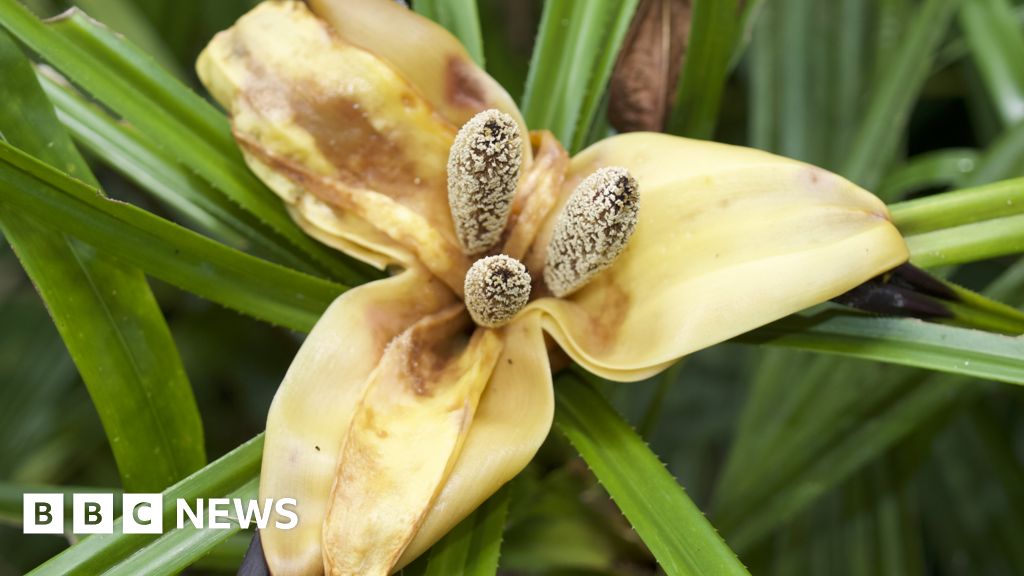Image copyright
RBG Kew
A flower from a species of forest climbers
New Guinea has the highest plant diversity of any island in the world, botanists have discovered.
The first full inventory of plants on the world’s largest tropical island reveals a treasure trove of flora.
More than 13,000 species can be found on New Guinea, ranging from tiny orchids to giant tree ferns, two-thirds of which do not exist elsewhere.
The findings, published in Nature, will be used to protect “one of the last unknowns for science”.
Identifying and naming plants is the first step towards conserving and protecting the plants of New Guinea, said Dr Tim Utteridge of the Royal Botanic Gardens, Kew.
“If we lose them, there’s no way we can restore them from anywhere else, because they’re just not found outside the island,” he said.
“We have a real responsibility to conserve this unique plant life.”
Image copyright
RBG, Kew
New Guinea has large tracts of unbroken rainforest
New Guinea is home to some of the best-preserved ecosystems on the planet, including coastal mangroves, huge expanses of tropical rainforest and alpine grasslands.
What is special about the flora of New Guinea?
New Guinea “is a paradise island teeming with life” and globally recognised as a centre of biological diversity, said Dr Rodrigo Cámara-Leret of the University of Zurich, Switzerland.
Yet, knowledge of New Guinea’s flora, “has remained scattered for years, limiting research in this mega-diverse area”, he said.
Image copyright
RBG, Kew
Tree ferns in the Cromwell Mountains of Papua New Guinea
Botanists have been identifying and naming plants collected there since the 17th century, with samples stored in herbaria around the world.
Only now have botanists been able to put all this information together in a full inventory of plant life, as has been done for other biodiversity hotspots, including the Amazon.
Botanists from the Royal Botanic Gardens, Kew, joined forces with experts in 19 countries to carry out the work.
What did the study show?
Previous estimates for the number of plants on the island have ranged from 9,000 to 25,000 species.
The researchers verified the identity of more than 23,000 plant names from upwards of 704,000 specimens.
Image copyright
RBG, Kew
A local guide located a spectacular rhododendron in bloom in the Cromwell Mountains
They found there to be 13,634 species of plants from 1742 genera and 264 families, which vastly exceeds the diversity of plant life on other islands, including Madagascar and Borneo.
Of the checklist, 68% of the plants in New Guinea are found only on the island.
What sorts of plants can be found there?
Orchids accounted for 20% of the flora in Papua New Guinea and 17% of Indonesian New Guinea.
Tree species accounted for 29% of species – by comparison, the Amazon has 2.6 times more trees, but in an area 6.4 times larger.
New Guinea also has many rare rhododendrons and begonia that have never been described before.
How will this information be used in conservation?
The plant checklist for New Guinea will be used to draw up plans to protect the unique plant diversity on the island.
Image copyright
RBG, Kew
Botanists preparing specimens in the Tamrau Mountains
The International Union for Conservation of Nature (IUCN), which compiles the official Red List of Threatened Species, requires plant names and geographic distributions to make conservation assessments.
More botanical exploration is urgently needed to collect unknown species before they disappear. And DNA studies are planned.
Since 1970, 2,812 new species have been published from New Guinea. In addition, the researchers estimate that, in 50 years, up to 4,000 species will be added to the list.
Dr Sandra Knapp of the Natural History Museum, London, said there is still much left to discover. “This should now serve as a baseline for much more work and discovery in the years to come,” she said.
Follow Helen on Twitter.

